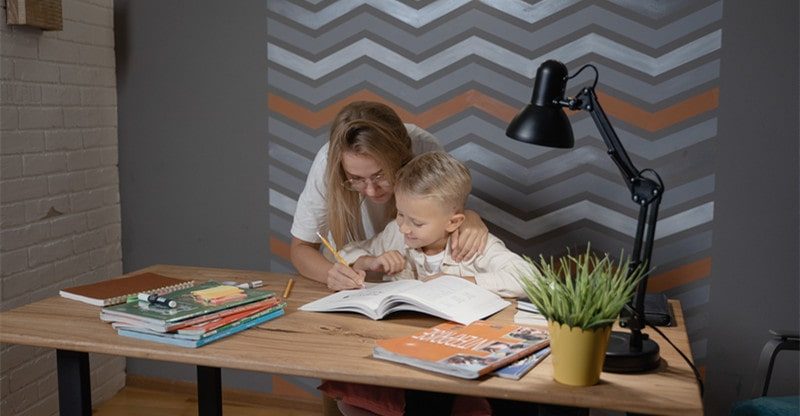Eight Ways to Help Your Pre-Schooler Learn
Preschool age is one that is very cute and fun and lovely, but preschoolers themselves are not the easiest to manage when it comes to encouraging them to learn. You don’t have to be in a home education setting to encourage a preschooler to learn something new, because from the moment your preschooler starts watching you when they are babies, they are learning continuously.
One of the easiest ways to help your toddler to learn something is to model the behavior that you want to see. And when you are bridging that gap between toddlerhood and kindergarten, you need to be clear on what you would like them to learn. Some parents don’t really worry about encouraging their children to learn until they go to kindergarten itself, but it doesn’t have to be you.
Whether it’s numbers for kids, alphabet letters for kids or seasons for kids, there are plenty of things that you could encourage them to learn and help them with their development along the way. Encouraging and motivating cognitive and language development is easy when you have the following everyday learning activities on your to-do list.
Additionally, paying attention to a child’s pronoun development is crucial for effective communication. Understanding how your child progresses in using pronouns can guide you in facilitating their language development. Building a supportive learning environment can help your child master essential language skills at an early age.
• Start with textures. Toddlers are sensory learners. They will sensory seek cold or hot things, rough or smooth things. Inviting your toddlers to try new things with textures is a great way to get them touching and smelling and tasting something new. You can trace letters of the alphabet or numbers onto poster paper and then let your toddler go nuts with finger paint.
You could even offer things such as beans, cotton, pasta and pipe cleaners to help them to cut and stick and decorate. Your child could outline the letters with their fingers and learn how the letters are formed. You could even teach them to hold a pencil. Teaching with textures can help your child to connect sensory feelings to the learning that they are doing.
• Teach your child to measure. You can help your child to learn how to measure things simply by using everyday items. You can teach them to measure with conventional ways such as with rulers or string, but you can also use apples, legos, or wooden blocks.
You could even discover how many of your child’s books it would take to cover your bed, and count as you do each of these activities so that your child learns to couple yuan counts along with you. You get to find a fun way of helping your child to count when you do things this way.
• Help your child to label. One of the best ways you can teach your child to read is to help them label things in the house. Picking one or two items to label at first such as the refrigerator or some chairs and rotating the labels every few months can help them to recognise letters and learn to sound them out. They can even help you to write the labels, and get the glue together.
If they’re old enough to recognise their letters, you can ask them to tell you what letter refrigerator begins with and ask them to find the label that starts with R. Learning games like this are very encouraging to a small child.
• Teach responsibility. That alone is to teach them responsibility. Nurture their need to be helpful, even when it’s not particularly helpful, by teaching them how to tidy up. Children always want to get under your feet to help you out, so you can harness that love to help and channel it into something better.
You can use the labeling tip we mentioned earlier to label areas where their toys should go or their socks should go or their laundry could go, and you can teach them how to look for the correct labels with the right pictures. Ask your child where certain things belong, and watch in wonder as they get it right.
• Tap into their investigative skills. Children are natural investigators. They want to hunt for things, they want to look for things they want approval for when they get something right. If you start a scavenger hunt with your children, you’ll be able to tap into that and have fun together. You could even pretend you can’t find the things that you are looking for and see how quickly they can find them. Add a timer to the game and a whistle for when the timer goes out and you have a whole brand new game to play.
• Go out exploring. Just like children are natural investigators, they are also natural explorers. Take your child around town so that they can get familiar with it. Point to the supermarket and the fire station, the police station and more. You could even help them to understand which trees are which in the park.
A constant discussion about the details of the neighborhood will really help them to remember it. The more you go, the less you’ll need to do it and the more you can ask your child to narrate the walk you are going on.
• Sing as many songs as you can. Creating funny tunes about rhyming words is just as good as classic songs like the itsy bitsy spider or the alphabet song. When you think of your children, they associate the words of the song with the tune that you are singing.
You have a good chance of encouraging your child to sing and to understand a song which is going to help them with their cognitive development. The children in your home will start to learn more through song as they recite letters and numbers, body parts for days a week all to melodic tunes.
• Lean on numbers. Creating a calendar grid with 31 boxes and helping your child to add signs and symbols to represent each month and each day will help them to learn their numbers.
When you lean on numbers, you’re able to then teach them how many days there are in a week, how many months in a year, how many years in a decade and so on. Routines can provide comfort, and by starting your day with numbers, they are learning from the moment they wake up without even realizing it.



